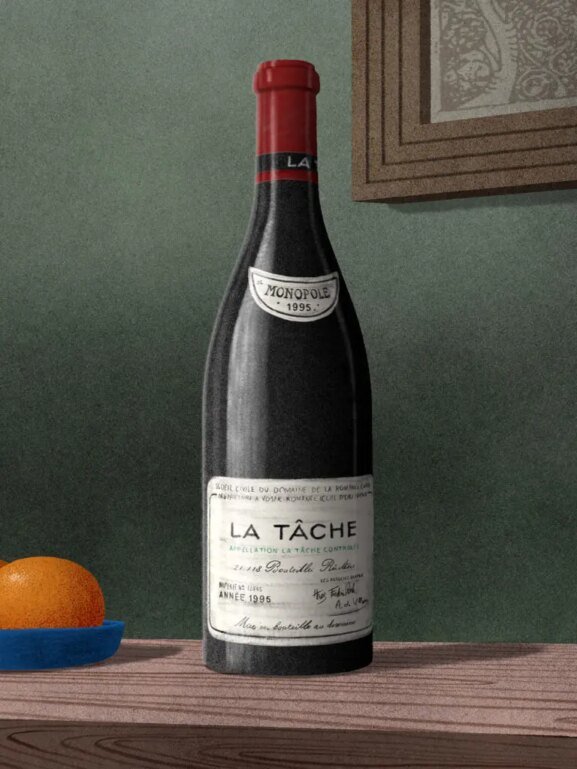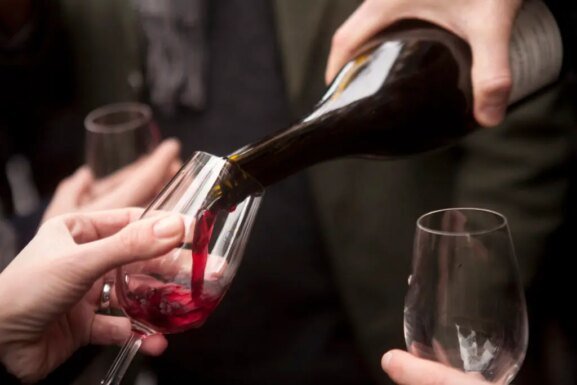What Is ‘Blanc de Noirs’ Sparkling Wine?
Despite Champagne’s ubiquity, the casual bubbles appreciator may not be so familiar with one of its most delicious styles—and French wine pros think that should change.
Blanc de noirs, which means “white from blacks” in French, is a sparkling wine made from red-skinned grapes. Often golden in color, due to minimal skin contact during the wine-making process, blanc de noirs wines tend to be full-bodied, rich and exceptionally food-friendly, with a delicate hit of savoriness and red fruit. And yet, many wine experts have found that they’re overlooked for their flashier cousin, blanc de blancs, which is made of white grapes.
“Blanc de noirs are very interesting, and often more complex than blanc de blancs, so they should be more popular,” says head sommelier Philippe Meurger, who manages the wine program at Hostellerie de Levernois, a Relais & Châteaux hotel, in Burgundy.
He finds that true Champagne lovers tend to have some familiarity with blanc de noirs, “but they are not commercialized enough,” he notes. If you’ve only been drinking blanc de blancs, says Meurger, tasting a good blanc de noirs is “a bit special.”
Here’s what you need to know about the elegant and robust sparkling wine that industry pros want on more people’s radars.
What Is the Difference Between Blanc de Blancs and Blanc de Noirs?
One of the most coveted and better known styles of Champagne is blanc de blancs, a category of sparkling wine made entirely of white grapes, typically Chardonnay (though Arbane, Petit Meslier, Pinot Blanc and Pinot Gris are also permitted).
Unlike wine labeled “Chardonnay,” a blanc de blancs—or the subtly different blanc de blanc, signifying just one grape varietal was used— is always sparkling, and the term is most often associated with Champagne.
You will also find the term “blanc de blancs” written on bottles from other regions around the world. In fact, any place that grows Chardonnay, from Oregon to South Africa, is likely to produce some blanc de blancs or blanc de blanc wines, often (but not always) in the traditional méthode Champenoise.
Blanc de noirs Champagne, while also pale-colored and sparkling, is made exclusively from red-skinned grapes, specifically Pinot Noir, Pinot Meunier or a combination of the two. It’s not to be confused with rosé Champagne, which also could be made with just red grapes or a combination of red and white, but boasts a blush hue.
Similarly, sparkling wines made from other regions can bear the title “blanc de noirs,” if they solely use red-skinned grapes. For example, Crémant de Bourgogne wines with “blanc de noirs” on the label are made with 100% Pinot Noir.
James Saidy, the sommelier at Meteora in Los Angeles, believes the style is appropriate for a wide range of occasions. “Blanc de noirs strike a joyful balance between delightful and serious,” he says. “I tend to gravitate toward them because I find it remarkable to experience what red grapes can become. The result is more robust than our held ideas of Champagne and they drink more like a wine with multiple discoveries in each sip.”
What Does Blanc de Noirs Taste Like?
There are certain attributes that Meurger looks for in a truly excellent blanc de noirs, which he prefers to be less sparkling than other Champagnes.
“It must smell of yellow-red fruits and spices when it is young, and coffee, cocoa or pastry when it is older,” says Meurger, who likes to pair blanc de noirs with “a really nice Bresse chicken from Burgundy with morels sauce” or even sweet desserts like gingerbread or pastries with cream. (The sweeter the dessert, however, the more Meurger would recommend an older blanc de noirs, “which is going to be more powerful to balance the sugar.”)
Of course, a variety of factors impact the taste of blanc de noirs, from exact grape breakdown to vineyard geography (also: NV vs vintage). Generally, you can expect a 100% Pinot Meunier-based blanc de noirs to “be very delicate, with saline acidity,” says chef Forough Vakili, who’s cooked in Paris and founded Atlanta’s Le Bon Nosh, which has a wine list of over 500 French bottles. But her favorite blanc de noir is an aged 100% Pinot Noir “because it’s so round and rich.”
The more Meunier in the bottle, the more you’ll find what Saidy calls “an attractive savory quality” that makes people fall in love with blanc de noirs. “If it’s 100% Meunier from a quality producer, I will always choose that,” he says. “If you get a chance to drink an older vintage, you may even find a few notes of suede and smoke—I’ve even had a couple that evoke chocolate cake.”
Blanc de Noirs Producers Worth Seeking Out, According to Pros
When living in Paris, Vakili found blanc de noirs Champagnes all over the place here; in the U.S., they are “a hidden gem” that she wishes were more prevalent.
“One of the most special blanc de noirs that is 100% Pinot Noir is a Champagne made by Bollinger from a four-hectare site called La Côte aux Enfants Champagne,” she says. “It’s so special that when Bollinger decides to not make bubbly wine from the red grapes, they make a still red Pinot Noir named La Cote aux Enfants.”
Among Meurger’s favorite producers are Billecart Salmon Le Clos Saint Hilaire, Pehu Simonet Fins Lieux Numéro 1, Catier Blanc de Noirs, Pierre Gerbais “Les Grandes Côtes Extra Brut” and Gonet-Medeville Blanc de Noirs.
One of Saidy’s favorite Champagne producers is Huré Frères, whose 2016 4V Pinot Meunier is a perfect match for Meteora’s grilled avocado and caviar dish with a touch of pork fat.
“This wine is sturdy with a ribbon of caramelized blood orange that off-sets the pork fat magically,” he says. For a biodynamic option, Fleury’s blanc de noirs of 100% Pinot Noir “has a classic texture and gives off flavors of ripe red fruit and violets.”
When dipping your toes into blanc de noirs, you may want to start with a grower Champagne. Saidy is passionate about sourcing them on his wine list because the vignerons tend to care “deeply about the land and the expression of each grape for each vintage,” he says. “And they always carry with them the dreams of their ancestors.”
More Sparking Wine Coverage
In the shop
Zalto Denk’Art Champagne Glass
In Stock | $78
Published: October 11, 2024

